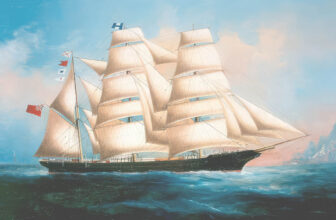
The Embarkation for of Cythera: A Journey Through Watteau’s Masterpiece
Among the great masterpieces of Rococo art, few paintings evoke the wistful beauty of fleeting romance and the poetry of human desire like The Embarkation for Cythera (L’Embarquement pour Cythère) by Jean-Antoine Watteau. Painted in the early 18th century, this luminous, evocative canvas transports viewers into a world that balances between myth and melancholia, pleasure and transience.
This story is not merely about a painting but a portal into the dreamlike world Watteau created, one that shaped the course of French art and continues to inspire deep reflection on the nature of love, time, and beauty.
Who Painted Gilles and The Embarkation for Cythera?
Both The Embarkation for Cythera and Gilles, another hauntingly enigmatic work, were painted by Jean-Antoine Watteau (1684–1721), a seminal French painter whose short life belied a profound influence on the development of European art. Watteau emerged at a transitional moment in the history of painting, bridging the grandeur of Baroque with the elegance of Rococo.
Watteau’s work introduced a new genre to French painting: the fête galante, a term coined by the French Academy specifically for his work. This genre depicted elegantly dressed figures engaged in amorous pursuits in dreamlike pastoral settings. While other Rococo artists emphasized ornament and frivolity, Watteau infused his canvases with an air of mystery and longing.
Gilles, a solitary figure in a Pierrot costume, captures the melancholy behind theatrical masks. Similarly, The Embarkation for Cythera reveals the complex emotional undercurrents beneath a seemingly idyllic scene.
What Does The Embarkation for Cythera Represent?
At first glance, The Embarkation for Cythera appears to depict a joyful outing, a group of lovers either arriving at or departing from the island of Cythera, the mythical birthplace of Venus, goddess of love. However, beneath the surface lies a layered meditation on the fleeting nature of love and the passage of time.
Cythera: The Island of Love
In Greek mythology, Cythera (also spelled Kythira) was one of the islands associated with the birth of Venus (Aphrodite). It became a symbol of idyllic love and erotic longing. For 18th-century audiences, Cythera embodied not only romantic escapism but also the tension between ideal love and its impermanence.
Watteau’s painting does not definitively tell us whether the couples are embarking for Cythera or leaving it. This ambiguity is part of the work’s enduring power. Are these lovers setting out in hope, or are they bidding farewell to a dream that cannot last?
What Term Best Describes The Embarkation for Cythera?
The term that best describes The Embarkation for Cythera is fête galante. This genre, literally “elegant party”, was created by the French Royal Academy of Painting and Sculpture to accommodate Watteau’s innovative subject matter. When Watteau submitted the painting as his reception piece to the Academy in 1717, it did not fit into the existing categories of historical, religious, or portrait painting. In response, the Academy invented a new category.
Fête galante paintings depict aristocratic or theatrical figures in pastoral or mythological settings, engaged in music, courtship, or dance. Yet in Watteau’s hands, the fête galante became more than decoration, it became a vehicle for exploring themes of longing, nostalgia, and the inevitable decay of earthly pleasures.
What is Happening in The Embarkation for Cythera?
To understand The Embarkation for Cythera, one must experience it like a scene from a play, one in which the actors, the setting, and even the colors serve a dramatic and emotional purpose.
The canvas is filled with elegant couples, dressed in theatrical, shimmering Rococo finery, lingering in a lush, dreamlike landscape. Statues of Venus, emblems of love, watch over them, and a soft, golden light bathes the scene in a haze of reverie.
Reading the Scene
On the left, we see couples in various stages of intimacy, one pair still seated, absorbed in tender conversation; another rising reluctantly. To the right, more couples descend a path toward a waiting boat, its mast adorned with pink sails. Putti, cherubic attendants of Venus, hover in the air and lead the procession forward.
This composition suggests a movement, not just physical, but emotional. These figures may be leaving the island, their moment of love over, or they may be arriving, hopeful and enchanted. Watteau never clarifies. Instead, he allows the painting to oscillate between these possibilities, just as human relationships waver between hope and loss, desire and regret.
Themes and Symbolism
Watteau’s painting is saturated with symbolism and emotional nuance.
The Statue of Venus: Often depicted with a garland or accompanied by doves, the goddess represents love in its most idealized, divine form. Her presence reminds the viewer of the painting’s mythological grounding.
The Lovers: Each couple represents a different stage in a romantic journey, beginning, blossoming, and ending. Their gestures, stances, and facial expressions capture the arc of human affection.
Putti: These playful winged figures symbolize romantic innocence and divine approval. Their presence adds to the sense of myth and fantasy.
The Boat: The vessel waiting to transport the lovers is a symbol of transition, perhaps between life stages, between infatuation and reality, or between the sensual world and the sublime.
Atmosphere: The soft, almost dissolving contours of the figures and the golden tones give the painting a dreamlike quality, as if the entire event were being remembered rather than witnessed, perhaps a love once experienced, now gone.
The Ambiguity of Arrival and Departure
One of the painting’s most famous aspects is the scholarly debate: Are the couples embarking for Cythera or departing from it?
Watteau himself offered no definitive answer, which allows the painting to function on multiple emotional registers.
If they are arriving, the scene is filled with anticipation, potential, and longing.
If they are leaving, it becomes a lamentation of lost love and time.
The Academy titled the 1717 version simply The Embarkation for Cythera, leaving the question open. But Watteau’s own subtle emotional cues, especially the melancholy expressions, suggest a tinge of sadness, leaning toward departure.
How Big is The Embarkation for Cythera?
There are two primary versions of The Embarkation for Cythera, both by Watteau:
The 1717 version, submitted to the Royal Academy as Watteau’s reception piece, measures approximately 129 cm × 194 cm (50.8 in × 76.4 in).
A later version, painted around 1718–1719, is larger, measuring 149 cm × 300 cm (58.7 in × 118.1 in).
The larger version allowed Watteau to further refine his composition and deepen the emotional impact of the scene. It is this second version that is most widely reproduced and celebrated.
Where is The Embarkation for Cythera Located Today?
The first version (1717) is housed at the Louvre Museum in Paris, where it remains one of the most cherished works of the early 18th century.
The second, larger version is in the Charlottenburg Palace in Berlin, Germany, as part of the collection of the Stiftung Preußische Schlösser und Gärten Berlin-Brandenburg.
Each museum presents the work within the broader context of Rococo art, but Watteau’s masterpiece transcends any one style. It is not simply a celebration of love, but a meditation on its fragility.
Watteau’s Legacy and the Tragic Beauty of Cythera
Watteau died young, at only 36, likely from tuberculosis. His work, however, lived on, inspiring artists from François Boucher and Jean-Honoré Fragonard to the later Romantics who found in his dreamy atmospheres a kind of spiritual longing.
The Embarkation for Cythera captures what might be called “aristocratic melancholy”, a sense of beauty that is both indulgent and mournful. The figures do not rush. They linger. They know, perhaps, that this perfect moment cannot last.
As poet Charles Baudelaire would later reflect on Watteau: “This inimitable poet had a place in his palette for all the nuances of human feeling.” Watteau’s Cythera is not just a place, it is a state of heart, a transient paradise we all long for and lose.
The Eternal Embarkation
To gaze upon The Embarkation for Cythera is to witness the timeless dance of love and loss. Jean-Antoine Watteau, with delicate brush and haunting vision, created a tableau that is both rooted in myth and achingly human.
The painting is not simply about romance, but about what happens when love is idealized, when we set sail for our own Cytheras, knowing full well we may never return the same.
The question lingers: Are we arriving? Or are we leaving?
Perhaps, like Watteau’s lovers, we are always doing both.




